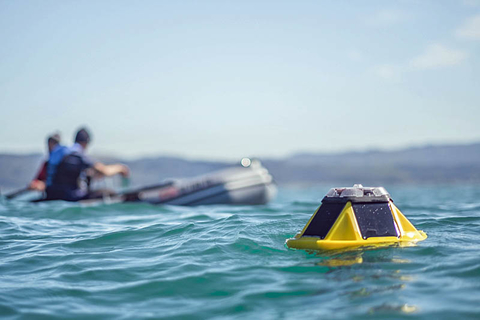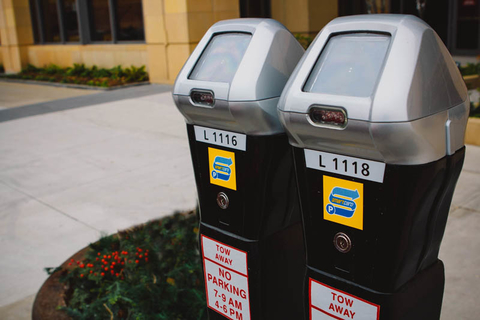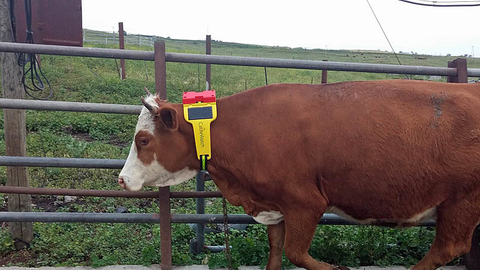
While energy harvesting technologies such as thermoelectric, electromagnetic, and piezoelectric devices remain in their infancy, and have yet to gain significant traction, such is not the case for small photovoltaic (PV panels) in combination with Lithium-ion (Li-ion) batteries. Together they provide continuous energy and a storage buffer for applications that cannot be more effectively powered by a primary battery. These two well-proven and synergistic technologies are providing highly cost-effective solutions for both consumer and industrial grade applications, including many connected to the IoT and the IIoT.
All sorts of industrial applications are currently deploying PV/Li-ion battery hybrid technology, including GPS sensors and asset trackers, environmental monitoring systems, smart agriculture (monitoring moisture, temperature, and rainfall), marine buoys, and many other M2M and systems control and data automation (SCADA) applications.

While most of industrial PV/Li-ion battery hybrids are deployed in external environments, this technology is now moving indoors with the introduction of PVs made of gallium arsenide film that can convert ambient light into enough energy to power certain low-power sensors.
Typical minimum requirements for a small PV/Li-ion battery hybrid
PV/Li-ion battery hybrid solutions typically must be able to power a wireless device for a minimum of 4 days on a single battery charge, otherwise, you could run the risk of experiencing temporary system failures during periods of continuous rain or heavy clouds. While each application has unique tolerances, the PV/Li-ion battery hybrid solution should be sized to provide sufficient battery storage capacity under varying conditions throughout the country.
For example, areas within Washington State receive the equivalent of only one hour of full sun per day during winter months, so the PV panel needs to be optimally sized and tilted to compensate for such low levels of sunlight. Conversely, certain areas throughout the American Southwest may receive up to 4 times more solar energy during winter, thus enabling the use of a smaller PV panel and Li-ion battery. Knowing your real-life conditions will help ensure that your PV/Li-ion hybrid solution is properly sized to application-specific requirements
Low-power design reduces your footprint to save money
Reducing your overall power consumption serves to minimize the required size of the PV panel and the Li-ion battery while also reducing the likelihood of temporary power failures during periods of low sunlight.
Numerous variables can influence the power consumption of an energy harvesting device, including steady state power consumption while the device is in ‘stand-by’ mode, the annual self-discharge rate of the battery, and the average current drawn during ‘active’ mode, which can vary significantly. For example, humidity, gas, motion and light sensors draw current in the 1-2mA range, GPS sensors can draw 10-25mA, while a cellular-based radio may consume up to 1A during active transmission.
Various methods can be utilized to help minimize energy consumption, including: low power microprocessors, components, and PCB design; and software programs that streamline data sampling, interrogation, and transmission; and by seeking to reduce losses during ‘stand-by’ mode. Trade-offs are often required to reduce the frequency of data collection and data transmission to conserve energy, otherwise you may need to specify a larger solar panel and battery. In addition, the use of low-power communication protocols such as LoRa, SigFox, ZigBee, WirelessHART, and others may reduce power consumption to a point that energy harvesting is no longer needed. Remote wireless devices that require low average daily current are often powered by bobbin-type lithium thionyl chloride (LiSOCl2) batteries that can operate for up to 40 years.

It is also vitally important to optimize your circuit design to capture as much available energy as possible. Common errors include failing to capture small amounts of current down to 1mA or by limiting your maximum charging rate during peak periods. Another common mistake is to restrict your voltage range, as potential voltage naturally varies based on solar conditions, angle to the sun, and temperature. Real world testing will serve to optimize your circuit design, which, in turn, could enable a more miniaturized PV/Li-ion battery hybrid solution.
Designing for extreme environments
PV/ Li-ion battery hybrids must be designed for the specific operating environment, with extra precautions being taken to ensure that both the PV panel and the Li-ion battery are properly designed to withstand the worst-case environmental conditions.
PV panels being deployed in highly demanding industrial environments should be rated to operate for a minimum of 10 years using high-efficiency cells constructed of the highest quality materials available. If not, the PV panel’s performance could deteriorate from UV damage or fail due to delamination and corrosion. You also need to be aware that consumer grade Li-ion batteries cannot operate or recharge at extreme temperatures, necessitating the use of an industrial grade Li-ion battery.
The design process will dictate any size and shape constraints for the PV panel, which, in turn, could affect your choice between an off-the-shelf or custom-designed PV panel based on requirements such as recommended voltage, custom coatings, and mounting requirements.
The total daily estimated voltage output capacity of a PV panel is determined by its surface area and its efficiency. For example, monocrystalline cells typically operate at 19% efficiency, producing about 0.019 watts per square centimeter or 0.12 watts per square inch. SunPower cells are 22% efficient, with the tracer lines being moved to the back of the cell to create more usable surface area.
All PV panels require some form of protective coating, including glass or other options such as urethane, ETFE, Epoxy or PET. Glass has high UV resistance, but adds weight, increases profile, and can shatter. Urethane is highly UV resistant and lasts up to 10 years. ETFE is lightweight but provides less UV resistance. Epoxy or PET are not commonly recommended for long-life industrial applications.

PV panels are mounted on some form of substrate, including Aluminum-Plastic-Aluminum, PCB plastic, or aluminum. The PV panel can be integrated into the device enclosure, or mounted separately.
Choosing the right Li-ion battery
When an industrial grade energy harvesting device is being deployed in a remote location of extreme environment, it is essential to specify a rechargeable Li-ion battery that not only meets average daily power consumption requirements but also provides extended life to ensure that the battery lasts as long as the device. Extended battery life is especially important for hard-to-reach locations where the costs associated with battery replacement far exceed the cost of the battery itself.
Consumer grade Li-ion batteries have severe performance limitations that make them ill-suited for long-term industrial deployments, as they are only rated to operate for a maximum of 5 years and 500 recharge cycles. Consumer Li-ion cells also have a limited temperature range of 0°C to 60°C, and cannot deliver the high pulses required for advanced two-way wireless communications via RF, cell phone, or satellite.
Industrial grade energy harvesting applications may require the use of Tadiran TLI Series industrial grade Li-ion batteries. These ruggedized cells feature up to 20-year battery life with 5,000 full recharge cycles, an extended temperature range of-40°C to 85°C, and the ability to operate and recharge at extremely cold temperatures. TLI Series batteries can also handle 15A pulses and 5A continuous discharge current to support remote wireless communications.
Conclusion
PV/Li-ion battery hybrids form the backbone of fully integrated power management solutions that bring long-life reliability to remote locations and extreme environments, including many applications connected to the IIoT.
Minimizing your total cost of ownership requires intelligent product design that serves to reduce average daily energy consumption, thus permitting the use of the smallest possible hybrid PV/Li-ion battery solution. It is also important to make sure that both the PV panel and the Li-ion battery are manufactured to the highest quality standards possible to ensure decades of maintenance-free performance without having to replace the battery.
About the authors
Jeff Crystal is the COO of Voltaic Systems. Jeff collaborates with customers in the design of off-grid IoT systems. His background includes software startups and management consulting, with a Biomedical Engineering degree from Tulane University and an MBA from the Kellogg School of Management.
Sol Jacobs is the VP & General Manager for Tadiran Batteries. He has over 30 years of experience in developing remote power solutions. His educational background includes a BS in Engineering and an MBA.